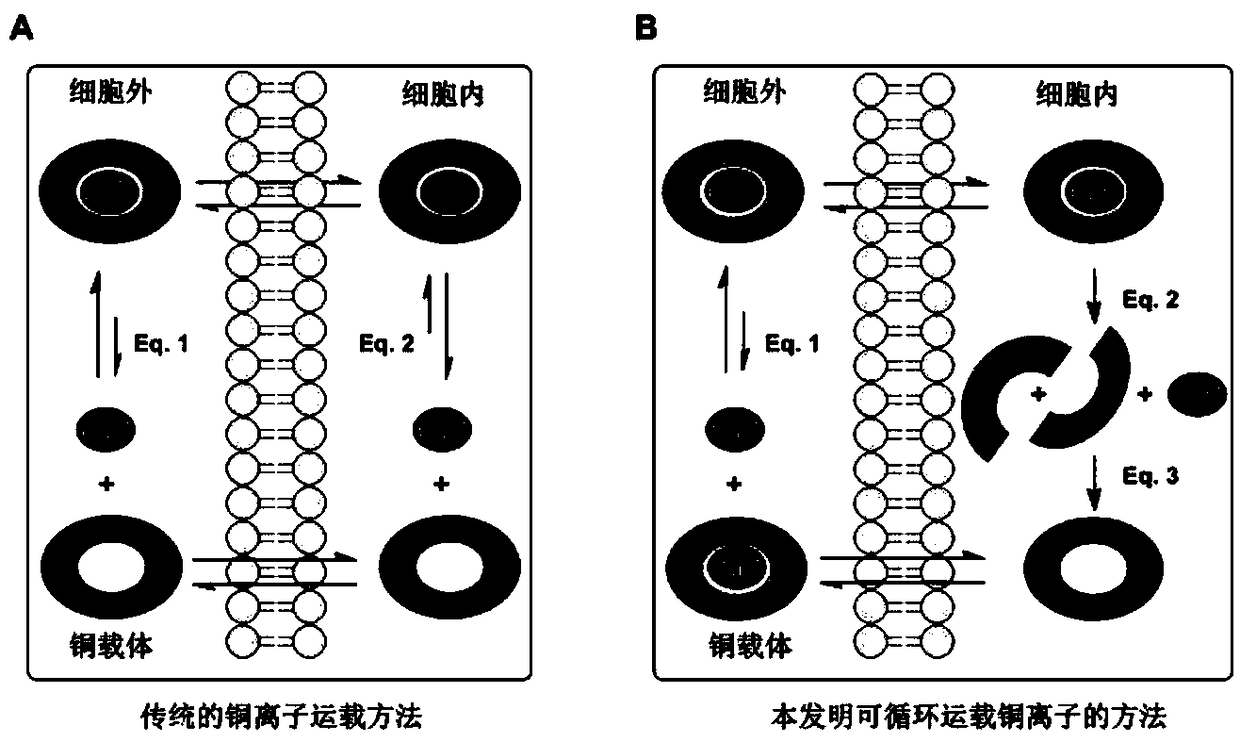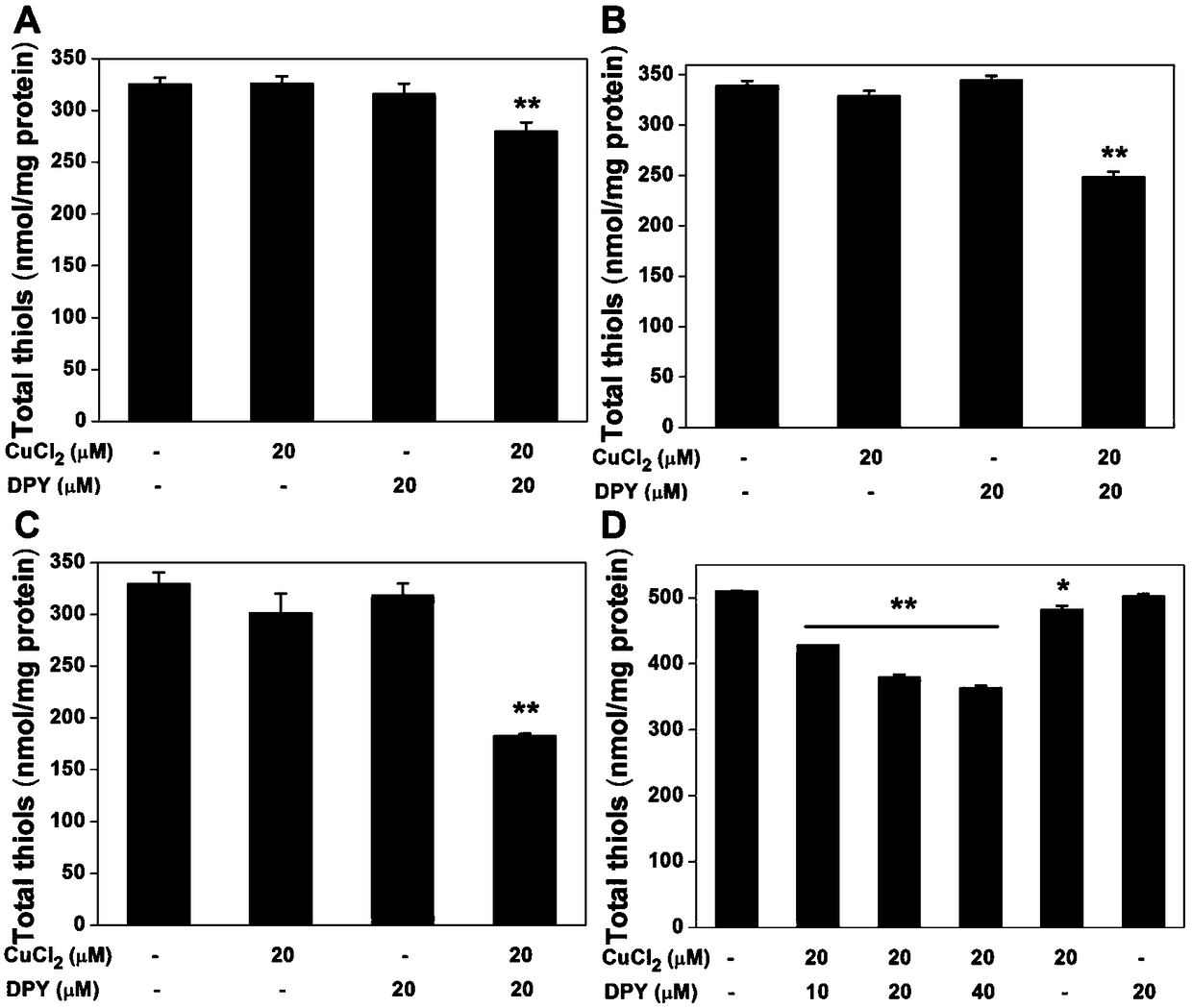Method for designing copper carrier anti-cancer reagent based on oxidation reduction cycle strategy
A design method and carrier technology, applied in the field of chemical medicine, to achieve the effect of good innovation, broad application prospects and good application
- Summary
- Abstract
- Description
- Claims
- Application Information
AI Technical Summary
Problems solved by technology
Method used
Image
Examples
Embodiment 1
[0024] Embodiment 1: A kind of method for designing copper carrier anticancer reagent based on redox cycle strategy, comprises the following steps:
[0025] (1) Determination of intracellular copper ion concentration.
[0026] The concentration of copper ions in the cells increased, indicating that DPY can carry copper ions into the cells.
[0027] The present invention examines DPY and CuCl 2 Copper ion uptake in tumor cells after co-acting, if DPY is used as a copper ion carrier, Cu 2+ loaded into the cell, then the intracellular Cu 2+ content will increase. We set up four groups of experiments: blank control group; 20μM CuCl 2 group; 20 μM CuCl 2 Combined with 20μM DPY; 20μM CuCl 2 Combined with 20 μ M DPH group. The above grouped drugs were added to HepG2 cells, and after 0, 0.5, 1, 3, 6, 12, 24 and 48 hours of action, the cells were collected for quantification, and the intracellular levels were detected by inductively coupled plasma atomic emission spectrometry (I...
example 1
[0028] Operation method of instance 1:
[0029] HepG2 or HeLa cells (1-3×10 6 ) were planted in triplicate in a 100mm culture dish overnight to adhere to the wall, and the drug was added at a specified concentration for a specified time, and the cells were collected. One was used for protein quantification; the other two were used for copper ion concentration detection: the sample was dissolved in concentrated nitric acid, and the copper content was detected by inductively coupled plasma atomic emission spectrometry (ICP-AES).
Embodiment 2
[0030] Embodiment 2: A method for designing copper-carrier anticancer agents based on a redox cycle strategy, comprising the following steps:
[0031] (1) Determination of intracellular copper ion concentration.
[0032] The increase in the concentration of copper ions in the cells indicates that DPY can carry copper ions into the cells as in Example 1.
[0033] (2) Determination of total sulfhydryl levels in cells.
[0034] The level of sulfhydryl groups in the cells decreased, indicating that small molecule thiols were involved in this cycle reaction.
[0035] As described in Example 1, DPY can load copper ions into cells. Under the action of intracellular reducing sulfhydryl molecules, Cu will be released 2+, then the content of small molecule sulfhydryl groups in the cells will inevitably decrease, so the present invention detects the changes in the level of total sulfhydryl molecules in the cells, as shown in Figure 3A-C, respectively with 20 μM CuCl 2 , 20μM DPY and ...
PUM
 Login to View More
Login to View More Abstract
Description
Claims
Application Information
 Login to View More
Login to View More - R&D
- Intellectual Property
- Life Sciences
- Materials
- Tech Scout
- Unparalleled Data Quality
- Higher Quality Content
- 60% Fewer Hallucinations
Browse by: Latest US Patents, China's latest patents, Technical Efficacy Thesaurus, Application Domain, Technology Topic, Popular Technical Reports.
© 2025 PatSnap. All rights reserved.Legal|Privacy policy|Modern Slavery Act Transparency Statement|Sitemap|About US| Contact US: help@patsnap.com



